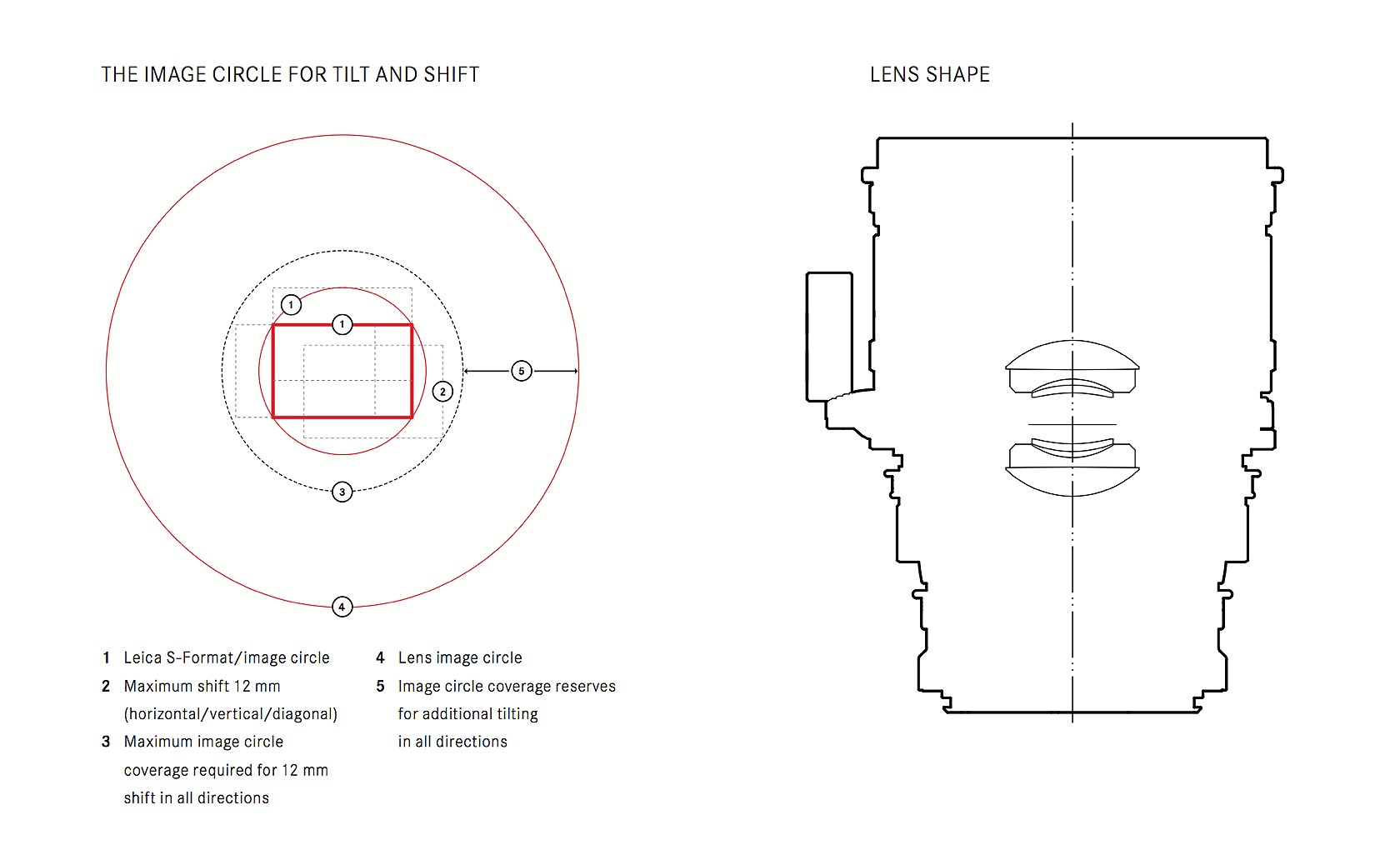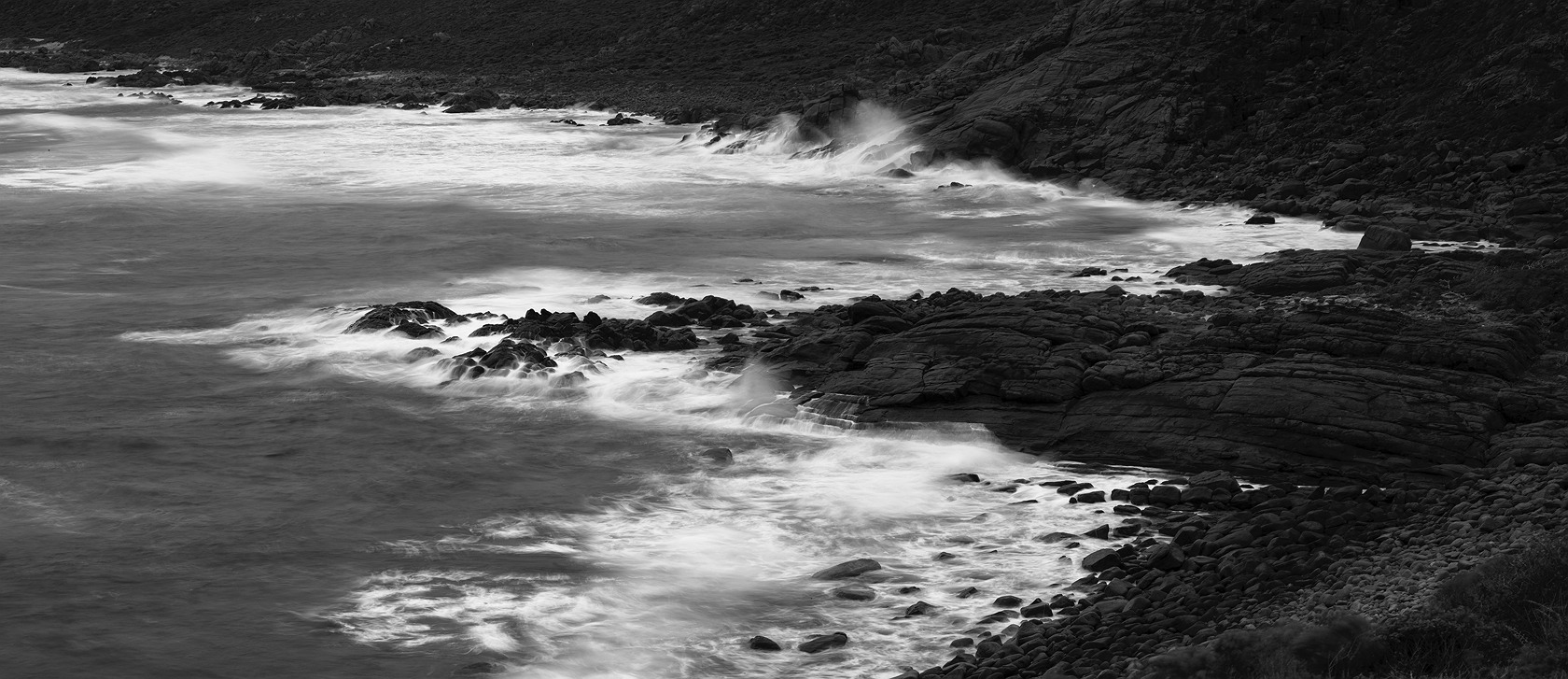When Leica announced the TS-APO-ELMAR-S 120mm lens for the S system, I like many others thought they were crazy. While there is nothing inherently wrong with having a 120mm tilt shift lens, it did seem like a strange move for the first tilt shift of the system to be such a long focal length. Certainly intended for product and still life photography rather than architectural. I paid virtually no attention to it until I met a fellow Leica S shooter named Hakan at my local Leica dealer, PRA Imaging.
Hakan had just purchased the lens and I asked him of his motivations. Being a technical shooter, he spoke of the near perfection of the lens performance when measured in MTF curves, and of the uniformity across the frame. He also mentioned the size of the image circle. The image circle is what really struck a chord with me. Let’s look at Leica’s diagram of the image circle for a moment;

When doing the calculations, we find that the 120mm lens shot at it’s maximum horizontal shift is similar to what you would expect when shooting with a 70mm lens and cropping down to a 7×3 ratio. Another way to put it would be to call it a 120mm lens on a 70mm x 30mm sensor. If I consider the quantity of photographs that I have shot with the 70mm lens and then cropped to 2:1 or 5:2, this lens suddenly looks like an upgrade to the system I have been using up until now. This is not even beginning to think of other image formats, such as square.
The days of panoramic film cameras is unfortunately behind us. However digital stitching of images has so far picked up the slack. Many photographers go to extreme lengths to do it as well as possible, including using panoramic tripod heads for finding the nodal point of a lens, and using automated electronic systems such as the Gigapan. The downfall of every system is the use of distorted lenses which carry the distortion with them as they change their angle to subject. A tilt-shift lens does not suffer from this problem, since the lens is essentially stationary and you instead move the sensor through it’s expanded image circle.
Referring back to the image circle diagram that Leica has provided, we can see why the performance of this lens is so phenomenal. It is excessively over engineered to accommodate the tilt and shift without ever approaching the edges of the image circle. All this means is never actually using the corner of the lens.
The first thing I did when given this lens to use was to head to South Perth and shoot a city skyline panorama. Being a manual focus only lens, you need to have your witts about you when using it. This is not a lens for lazy photographers, however I doubt many lazy photographers are walking around with Leicas. I had failed to realise while using this lens for the first day that the S2’s focus confirmation works as expected with this lens. So instead of relying on the view through the viewfinder, you can actually turn the focus ring until you hit focus confirmation. The Microprism focus screen (which I am waiting to arrive) will make the use of this lens significantly more enjoyable.
The image below is a 100% crop of the City of Perth skyline. Utilising the extended horizontal image circle of the lens yields just under a 60 megapixel image in a 7:3 ratio with exceptionally uniform image quality across the frame.

The lens is easy to use when depth of field is easily achieved. The focus ring is smooth and precise. The mechanical aperture ring is a delight to have on the S-system. I wish Leica had given that to all of the S lenses. For most of the initial photographs I created, I was shooting distant subjects that naturally fell into the flat plane of focus with a stopped down aperture.
Obviously, as with any multi-shot panorama image, subject movement is a problem. A small amount of planning accommodates it easily. Since shooting at 12mm of shift on either end still includes a small amount of overlap, you can quickly do a 180 degree rotation on the lens and be shooting the second frame quickly.
The image below shows the expanded image circle available using 12mm of shift and rotation in steps of 30 degrees. I have an interest in doing more square format shooting with this lens.
Imaging performance
In the photo below, I used 12mm of shift both left and right to produce the 7:3 frame, and tilted the lens to align the plane of focus with the ground. The monochromatic version is my finished image. The level of micro contrast in the image was astounding.
The red boxes in the above colour version of this image are presented as 1:1 crops below. If you are using a smartphone, click the images to go straight to the image file for viewing up close.
On the far left of the frame, at the edge of what is available to us via shift, the lens captures enough resolution to render individual leaves. Branches are recorded as a soft one pixel wide line, most likely the limiting factor here is the bayer colour filter interpolating pixels around. Where is our monochromatic S camera, Leica?
In the far distance we can see the plane of focus is giving us excellent sharpness. Again, the fact that it’s being recorded on a colour sensor seems to be the only thing limiting resolution. In case you hadn’t worked it out, it was raining in the distance.
Down in the foreground, you can see why this lens is such a powerful device to use. At a focal length of 120mm, there is virtually no depth of field. At f/16 you are still left with massively blurred out backgrounds and foregrounds around your subject. When the plane of focus was tilted back to keep the top of the grass in the foreground in focus, f/16 didn’t provide enough depth of field to focus the ground below the grass too. If you want to produce images at this focal length with any depth, it can’t be done with stopping down alone.
So the question is; when is the S-system going to see more tilt-shift lenses? There are already third party options available via adapter, but I am certainly interested in seeing another Leica offering in the realm of 45 to 70mm.
I am quite sure I am going to buy the TS-APO-ELMAR-S 120mm, the question is whether I will buy it in addition to or in place of the APO-MACRO-SUMMARIT-S 120mm.
You can buy or test the TS-APO-ELMAR-S 120mm in Perth at PRA Imaging. Call ahead to make sure they have it in store at the moment.













